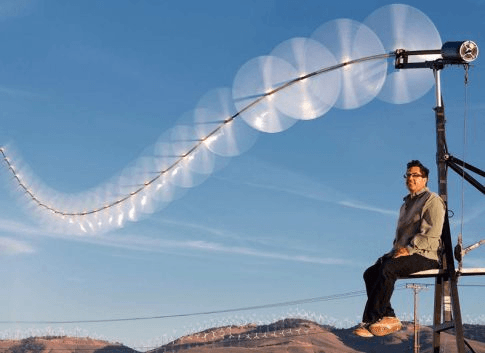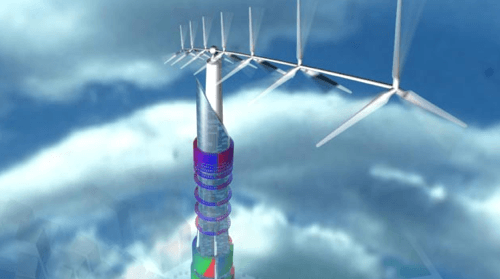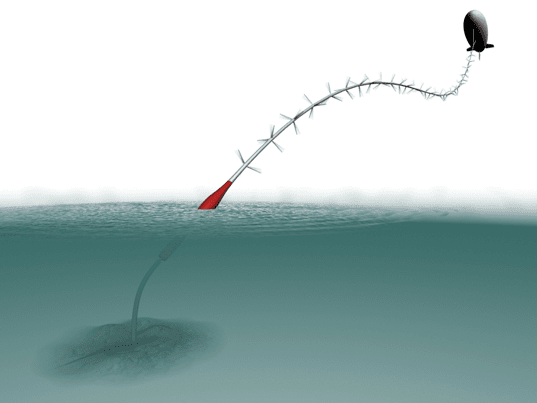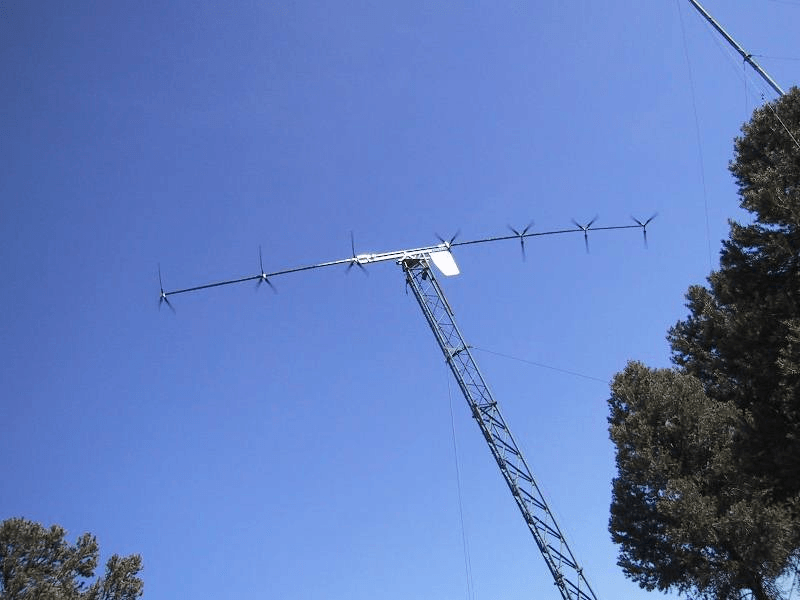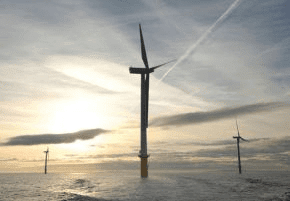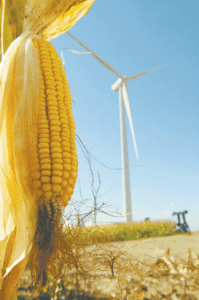Continuing our look at non-conventional wind turbines, here is another interesting design.
The idea behind this wind turbine was to home in on simplicity: Produce an off-shore turbine that has the bare necessities to operate, and removing all components that do contribute directly to power generation.
This obviously has a welcoming effect on cost to produce. As you can see from the illustration above, the turbine has a number of small rotors with a universal joint that enables it to tilt. That means it can literally bend with the wind. In tests the prototype was able to produce 6,000 watts in winds of 32.5 mph. If the concept can be scaled up successfully, the use of Super turbines could mean a tremendous jump in the amount of energy wind farms could produce.
They can also be connected to blimps- small tethered dirigibles-as shown here.
The adherence to back to basics simplicity means that the Selsam Super Turbine as no complex gearboxes or slip rings to turn and steer the turbines. Its long flexible drive shaft, mounted on versatile universal joint housing means that it can twist and turn at multiple angles to gain optimum power creation from prevailing winds. Selsam use the analogy of the human spine, saying that it can bend and twist from side to side and backward and forward, but the vital cord within still carries out its function.
The number of small rotors along its shaft varies depending on the length and particular design need. Most versions have between six and eight rotors, but could go up to twelve. They rotate in a synchronised fashion with the “exhaust” of the upper rotors helping to drive the ones below. Another analogy may help- this one provided by the Company itself:
“Like a flock of geese, each rotor favourably affects the next in line. Like a set of louvers, the tilted rotors pull in fresh wind from above, deflecting their wakes downward to insure fresh wind for succeeding rotors and, like a stack of kites, to add overall lift which helps support the driveshaft against gravity and downwind thrust forces. The rotors act as gyroscopes or spinning tops, stabilizing the driveshaft where they are attached.”
As said above a dirigible can be anchored to the upper end of the turbine’s spine. By being anchored in this way the entire shaft can rotate freely, adding its own motion to the rotors and thus adding greater power generation. The blimp itself could also be covered with solar cells- so that virtually everything is harnessing renewable energy.
Although these Super Turbines can be used on land, the primary employment will be offshore. Moored by tethers to the sea bottom, the shaft’s fulcrum will be at or very close to the water surface, allowing maximum “twistability”. But what happens in severe storms? There have been suggestions that the super turbine could be filled with water, and laid down onto or beneath the water’s surface, until the storm has abated. But this wouldn’t work with a dirigible attached, unless that was manually untethered and stored.
It has to be recognised that there may be some disadvantages to be overcome: The universal joint for its fulcrum and the flexible drive shaft have proved themselves in smaller test models, but with that be able to successfully translate into full scale commercial turbines? There may also be the potential to impact adversely on passing seabirds, boats and ships- especially in unpredictable conditions. The inventor of the Selsam Super Turbine, Doug Selsam, and his wind turbines, were featured on Discovery Science channel, in a programme called “Innovation Nation” broadcast on 1 September this year.
